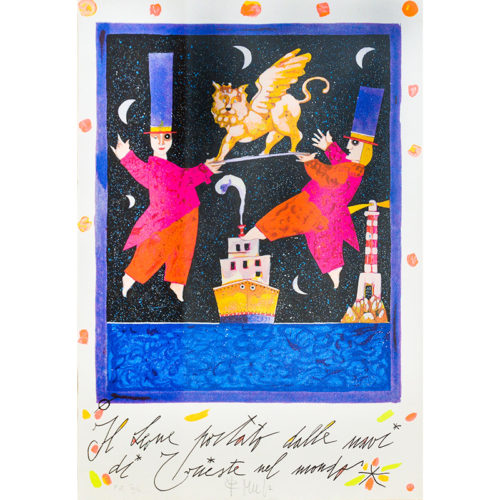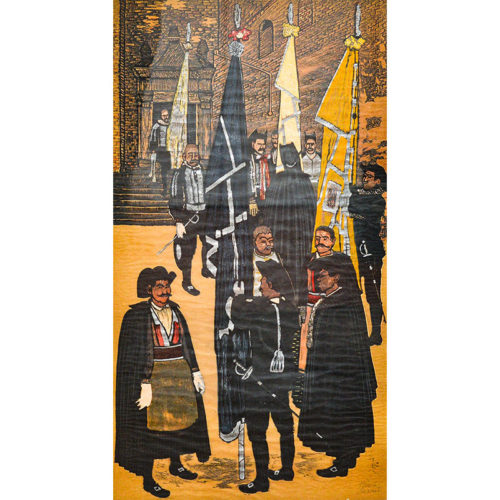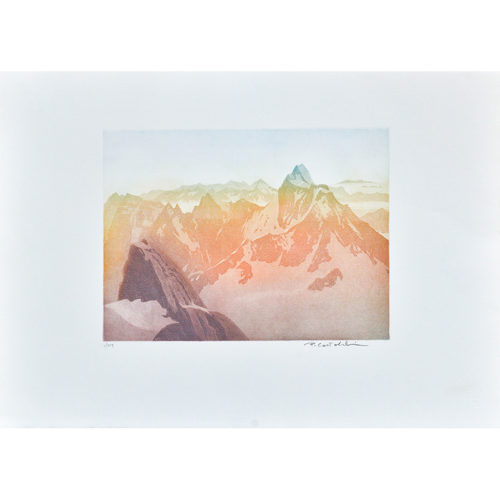-
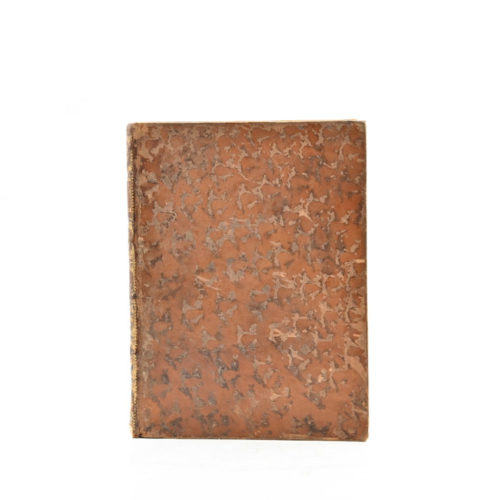
ON THE ANCIENT CONDITION OF THE VERCELLI AREA AND THE ANCIENT VILLAGE OF SANTIA'.
DISSERTATION BY JACOPO DURANDI DEDICATED TO HIS ROYAL HIGHNESS BENEDETTO MARIA MAURIZIO DI SAVOJA DUKE OF CHABLAIS. IN TURIN, 1766.
Rare first edition. Very well preserved.Period: 1766
Measurements: H 25,5 x 19,5 x 2,5 cm
-
Out of stock
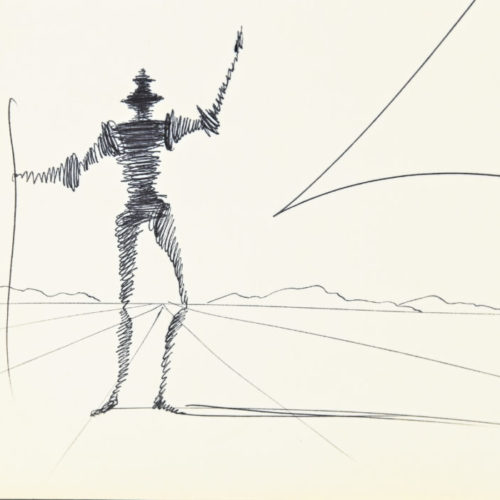 "Dali - De Draeger" catalogue by Max Gérard, 1968. The catalogue has a drawing of Don Quixote, with a dedication on the guard paper, a gift from the Catalan artist Salvador Dali (Figueras 1904 - 1989) "Every morning, as I wake up, I experience a supreme pleasure that I am discovering today for the first time: that of being Salvador Dali, and I wonder, filled with wonder, what this Salvador Dali will do again today that is so prodigious. And every day it is more difficult for me to understand how others can live without being Gala or Salvador Dali. A Catalan with a thirst for gold and glory, Dali painted a lot and talked a lot. His favourite subject: how to become a genius. His conclusion: 'Oh, Salvador, now you know, if you play at being a genius, you will become one! Salvador Dali's taste for provocation, excessive character, pursuit of paradox and exaggerated egocentricity have made him a well-known figure to the general public. These elements have helped to turn a great artist - endowed with a fervid creative intelligence and a profound knowledge of the history of the arts, the masters of the past and the literary research of his time - into a myth, which still arouses great curiosity today. However, his continuous exposure as an absolute 'genius' of art, to critics and to the judgement of the public, has given the impression of being able to fully understand his work and easily enter into his thought. In reality, his entire oeuvre reveals a very complex personality. Like his compatriot Picasso, Dali experimented with different expressive languages during his long career, moving away from painting towards cinema, theatre, photography and even performance. "At the age of six I wanted to be a cook. At seven I wanted to be Napoleon. And my ambition has been steadily growing ever since". Dali's life and work are inextricably intertwined, in fact many events in the artist's life were reflected in his creations, and many paintings can only be understood on the basis of the events that marked his life. At the age of six he painted his first canvas. Then, at the age of ten, he received his first drawing lesson, under the guidance of the famous Impressionist painter Ramón Pichot (1872 - 1925). He would later say that he was influenced by Pichot's works, which represented his first contact with a non-academic artistic current, focused on the reality of his time. At the age of fourteen he discovered the pompiers, at twenty-two cubism and at twenty-four he was already Dali, convinced that he had been called Salvador because he was destined to be the "saviour" of painting threatened with death by abstract art, academic surrealism, Dadaism in general and all the anarchic isms. At the age of 25, he was already winning over critics, doing business with gallery owners and collecting scandals. Period: 1968 Measurements: Page size with drawing and dedication H 30 x W 27.5 cm
"Dali - De Draeger" catalogue by Max Gérard, 1968. The catalogue has a drawing of Don Quixote, with a dedication on the guard paper, a gift from the Catalan artist Salvador Dali (Figueras 1904 - 1989) "Every morning, as I wake up, I experience a supreme pleasure that I am discovering today for the first time: that of being Salvador Dali, and I wonder, filled with wonder, what this Salvador Dali will do again today that is so prodigious. And every day it is more difficult for me to understand how others can live without being Gala or Salvador Dali. A Catalan with a thirst for gold and glory, Dali painted a lot and talked a lot. His favourite subject: how to become a genius. His conclusion: 'Oh, Salvador, now you know, if you play at being a genius, you will become one! Salvador Dali's taste for provocation, excessive character, pursuit of paradox and exaggerated egocentricity have made him a well-known figure to the general public. These elements have helped to turn a great artist - endowed with a fervid creative intelligence and a profound knowledge of the history of the arts, the masters of the past and the literary research of his time - into a myth, which still arouses great curiosity today. However, his continuous exposure as an absolute 'genius' of art, to critics and to the judgement of the public, has given the impression of being able to fully understand his work and easily enter into his thought. In reality, his entire oeuvre reveals a very complex personality. Like his compatriot Picasso, Dali experimented with different expressive languages during his long career, moving away from painting towards cinema, theatre, photography and even performance. "At the age of six I wanted to be a cook. At seven I wanted to be Napoleon. And my ambition has been steadily growing ever since". Dali's life and work are inextricably intertwined, in fact many events in the artist's life were reflected in his creations, and many paintings can only be understood on the basis of the events that marked his life. At the age of six he painted his first canvas. Then, at the age of ten, he received his first drawing lesson, under the guidance of the famous Impressionist painter Ramón Pichot (1872 - 1925). He would later say that he was influenced by Pichot's works, which represented his first contact with a non-academic artistic current, focused on the reality of his time. At the age of fourteen he discovered the pompiers, at twenty-two cubism and at twenty-four he was already Dali, convinced that he had been called Salvador because he was destined to be the "saviour" of painting threatened with death by abstract art, academic surrealism, Dadaism in general and all the anarchic isms. At the age of 25, he was already winning over critics, doing business with gallery owners and collecting scandals. Period: 1968 Measurements: Page size with drawing and dedication H 30 x W 27.5 cm -
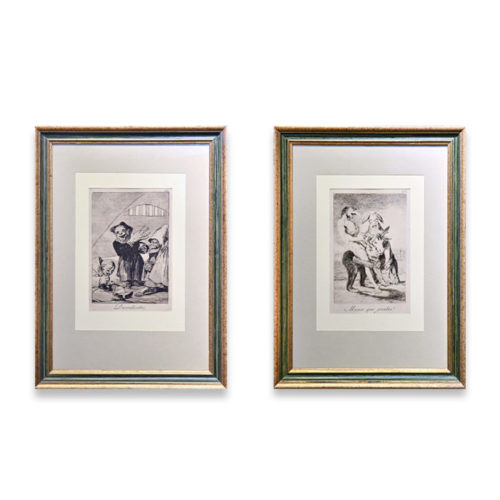 "Duendecitos" etching / aquatint by Francisco Goya y Lucientes (Fuentedos, Spain 1746 - Bordeaux 1828). Original etching - Plate 49 of the "Los caprichos" series - V edition on XII. Bibliography: Harris 84; Delteil 86. Provenance Vianzone, Turin. Dimensions in mm: 190 x 130 "Miren que grabes!" etching / aquatint by Francisco Goya y Lucientes (Fuentedos, Spain 1746 - Bordeaux 1828). Original etching - Plate 63 of the "Los caprichos" series - V edition on XII. Bibliography: Harris 98; Delteil 100. Provenance Vianzone, Turin. Dimensions in mm: 187 x 122 The Capricci represent the most famous series of engravings by the Spanish master: 80 plates including etchings and aquatints of large format, made in 1799. These are plates that give rise to imaginative, pungent and grotesque representations that are affected, on a stylistic level, by an Italian influence due to the long stay in Rome in 1770. The main theme is the description of the evils of the world, from deceptions to prejudices, up to the lies of the Spanish society of the years in which Goya himself lived, in a heated controversy towards the clergy and the nobility. At the time of their publication, the drawings caused a sensation, precisely due to the fact that numerous notables of the time were recognized in them. So much was the clamor that even the Holy Inquisition had to intervene, to avoid the publication of those prints deemed excessive and blasphemous. This was probably what determined the poor success of I Capricci, so that the painter was forced to sell the entire first print run to King Charles IV, in exchange for a scholarship for his son Javier. The success of the series increased with the second edition of 1855, until it became one of the most important and celebrated graphic works in the history of art. Period: Second half of the 19th century Measurements: In frame H 45 x W 33 x D 2.5 cm / H 19 x W 13 cm // In frame H 44 x W 32.5 x D 2.5 cm / H 18.7 x W 12.2 cm
"Duendecitos" etching / aquatint by Francisco Goya y Lucientes (Fuentedos, Spain 1746 - Bordeaux 1828). Original etching - Plate 49 of the "Los caprichos" series - V edition on XII. Bibliography: Harris 84; Delteil 86. Provenance Vianzone, Turin. Dimensions in mm: 190 x 130 "Miren que grabes!" etching / aquatint by Francisco Goya y Lucientes (Fuentedos, Spain 1746 - Bordeaux 1828). Original etching - Plate 63 of the "Los caprichos" series - V edition on XII. Bibliography: Harris 98; Delteil 100. Provenance Vianzone, Turin. Dimensions in mm: 187 x 122 The Capricci represent the most famous series of engravings by the Spanish master: 80 plates including etchings and aquatints of large format, made in 1799. These are plates that give rise to imaginative, pungent and grotesque representations that are affected, on a stylistic level, by an Italian influence due to the long stay in Rome in 1770. The main theme is the description of the evils of the world, from deceptions to prejudices, up to the lies of the Spanish society of the years in which Goya himself lived, in a heated controversy towards the clergy and the nobility. At the time of their publication, the drawings caused a sensation, precisely due to the fact that numerous notables of the time were recognized in them. So much was the clamor that even the Holy Inquisition had to intervene, to avoid the publication of those prints deemed excessive and blasphemous. This was probably what determined the poor success of I Capricci, so that the painter was forced to sell the entire first print run to King Charles IV, in exchange for a scholarship for his son Javier. The success of the series increased with the second edition of 1855, until it became one of the most important and celebrated graphic works in the history of art. Period: Second half of the 19th century Measurements: In frame H 45 x W 33 x D 2.5 cm / H 19 x W 13 cm // In frame H 44 x W 32.5 x D 2.5 cm / H 18.7 x W 12.2 cm -
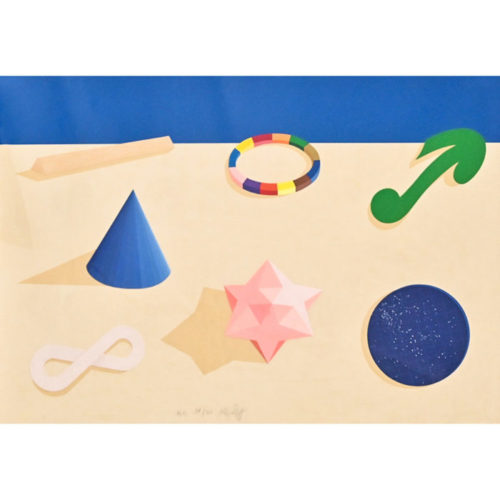 Screen printing and collage on paper by Lucio Del Pezzo, limited edition of only 20 copies. In excellent condition. Lucio Del Pezzo (Naples 1933 - Milan 2020) was an Italian artist, painter and sculptor. He is one of the founders of “Gruppo 58”, which has always been very close to other avant-gardes, such as Enrico Baj's Nuclear Movement, the Spoor Movement of Monaco, Phases of Paris and Boa of Buenos Aires. His works from the period 1958-1960 featured assemblages of various objects, including fragments of popular prints and images. In 1960 he moved to Paris, then to Milan, where several monographic exhibitions have been dedicated to him. The first one dates back to 1974. Starting from 1962 Del Pezzo has created his typical repertoire of "paintings" or "sculptures", made of monochrome geometric panels, on which shelves or hollowed out concavities are inserted, which support regular geometric objects, sometimes very colorful. Lucio del Pezzo's production focuses on the use of common objects that, enriched with different materials, cross the boundary between painting and sculpture. His style is also characterized by a rapprochement with metaphysical atmospheres, while the playful sense and irony behind each work is inspired by the Dadaist movement. Period: 1970s Measurements: In frame H 73 x W 103 x D 3.5 / Serigraphy H 70 x W 100 cm
Screen printing and collage on paper by Lucio Del Pezzo, limited edition of only 20 copies. In excellent condition. Lucio Del Pezzo (Naples 1933 - Milan 2020) was an Italian artist, painter and sculptor. He is one of the founders of “Gruppo 58”, which has always been very close to other avant-gardes, such as Enrico Baj's Nuclear Movement, the Spoor Movement of Monaco, Phases of Paris and Boa of Buenos Aires. His works from the period 1958-1960 featured assemblages of various objects, including fragments of popular prints and images. In 1960 he moved to Paris, then to Milan, where several monographic exhibitions have been dedicated to him. The first one dates back to 1974. Starting from 1962 Del Pezzo has created his typical repertoire of "paintings" or "sculptures", made of monochrome geometric panels, on which shelves or hollowed out concavities are inserted, which support regular geometric objects, sometimes very colorful. Lucio del Pezzo's production focuses on the use of common objects that, enriched with different materials, cross the boundary between painting and sculpture. His style is also characterized by a rapprochement with metaphysical atmospheres, while the playful sense and irony behind each work is inspired by the Dadaist movement. Period: 1970s Measurements: In frame H 73 x W 103 x D 3.5 / Serigraphy H 70 x W 100 cm -
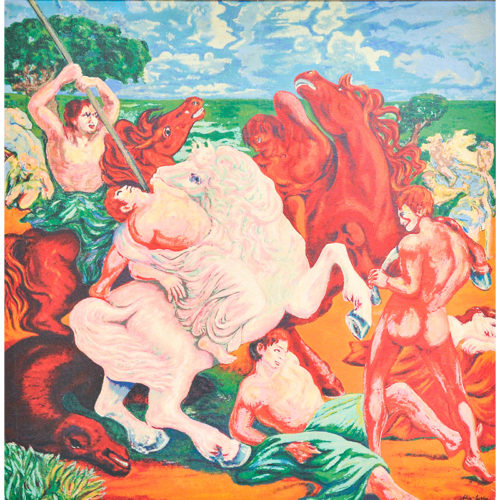 Large original screenprint by Aligi Sassu (1912-2000). SASSU ALIGI. Born on July 17, 1912 in Milan. For his father's Sardinian origins, he spent several years of his childhood in Thiesi (Sassari). His first essays are from 1926. He participated in the futurist movement until 1930; then he broke away. He had contacts in Milan with Edoardo Persico and Raffaele Carrieri; around 1931 he was in opposition to the Italian twentieth century, with Birolli, Manzù, Grosso, Tomea. He exhibited for the first time at the Venetian Biennale in 1928; his first personal is in 1930, at the Galleria del Milione. In 1934 he was in Paris, where he obtained success at the Galerie des Quatre Chemins. Since 1935, after returning to Milan, he has taken part in numerous artistic events. He participated in the first two editions of the Bergamo Prize; at the Sacred Art Exhibition in Bergamo he received the first prize with the work Deposition. He is an etching, lithographer, ceramist; he created works of sculpture, frescoes, stained glass, scenography. In 1957 he created a large cycle of mosaics in the apse of the Chiesa del Carmine in Cagliari; His works have been presented in numerous cities, including abroad: in the U.S.A. in 1933; in London in 1935; in Buenos Aires in 1947; and in Paris, Boston, Lisbon, Bucharest (where an anthology of paintings and graphic works was set up in 1966). Among the major solo shows in Italy, we mention: the one concerning graphics and sculpture carried out in the Galleria Civica di Monza in 1965; that of 1966 in Palermo presented by Salvatore Quasimodo; Period: 20th century Measures: H 163 x L 159 x P 4.5 / Canvas H 151 x L 146 cm
Large original screenprint by Aligi Sassu (1912-2000). SASSU ALIGI. Born on July 17, 1912 in Milan. For his father's Sardinian origins, he spent several years of his childhood in Thiesi (Sassari). His first essays are from 1926. He participated in the futurist movement until 1930; then he broke away. He had contacts in Milan with Edoardo Persico and Raffaele Carrieri; around 1931 he was in opposition to the Italian twentieth century, with Birolli, Manzù, Grosso, Tomea. He exhibited for the first time at the Venetian Biennale in 1928; his first personal is in 1930, at the Galleria del Milione. In 1934 he was in Paris, where he obtained success at the Galerie des Quatre Chemins. Since 1935, after returning to Milan, he has taken part in numerous artistic events. He participated in the first two editions of the Bergamo Prize; at the Sacred Art Exhibition in Bergamo he received the first prize with the work Deposition. He is an etching, lithographer, ceramist; he created works of sculpture, frescoes, stained glass, scenography. In 1957 he created a large cycle of mosaics in the apse of the Chiesa del Carmine in Cagliari; His works have been presented in numerous cities, including abroad: in the U.S.A. in 1933; in London in 1935; in Buenos Aires in 1947; and in Paris, Boston, Lisbon, Bucharest (where an anthology of paintings and graphic works was set up in 1966). Among the major solo shows in Italy, we mention: the one concerning graphics and sculpture carried out in the Galleria Civica di Monza in 1965; that of 1966 in Palermo presented by Salvatore Quasimodo; Period: 20th century Measures: H 163 x L 159 x P 4.5 / Canvas H 151 x L 146 cm


